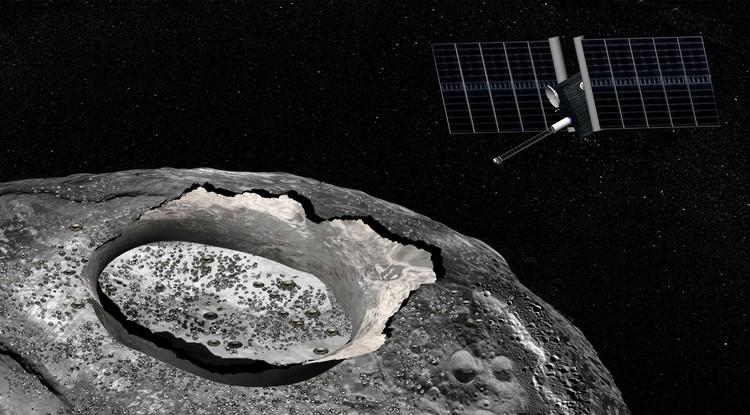A team of astronomers discovered water on a large asteroid located between Mars and Jupiter. The group of scientists are led by Vishnu Reddy, an assistant professor in UA’s Lunar and Planetary Laboratory.
Psyche, named after Cupid’s beloved in Greek mythology, is a 300 km asteroid composed almost entirely of nickel and iron. Psyche is one of the 10 largest known asteroids, and is thought to be subject to a great deal of heat.
The discovery of water has come as a shock to astronomers who have been intrigued by Psyche ever since its discovery more than 150 years ago.
“One interpretation of these asteroids is that they are the cores of ancient protoplanets, stripped of their rocky crust and mantle by enormous collisions early in the history of the solar system,” said Michael Shepard, a co-author of Reddy’s paper and professor of environmental, geographical and geological sciences at Bloomsburg University of Pennsylvania. “There are others who suspect they may have originally formed out of metal [with no rocky mantle or crust] close to the sun and later migrated to their current position. We’re just not sure. But in any event, all the interpretations involve a lot of heat.”
RELATED: In case you missed them: Six scientific successes that stole the show this year
Heat is the most puzzling part of Psyche’s history.
“All of the formation theories for metal asteroids like Psyche involve a lot of heat,” Shepard said. “Any water originally present would surely have been boiled away—these asteroids should be extremely dry and none of the minerals should be hydrated or contain the hydroxyl ion.”
While this discovery is turning heads in the scientific community, it is also raising a lot of questions. Shepard and his contemporaries are working to find some answers.
“Either the formation theories … are wrong, or there is another way to put hydrated minerals on the surface,” Shepard said. “We favor this latter implication. Observations of the large asteroid 4 Vesta by the Dawn spacecraft showed regions of dark material. … These other asteroids did contain hydrated minerals, and now their debris is visible on the surface of Vesta. We suspect something similar happened with Psyche.”
The discovery comes from spectral imaging out of UAs cutting-edge LPL.
“Using a telescope sensitive to light in the near-infrared, we were able to detect a spectral feature consistent with the presence of hydrated minerals—minerals that contain water,” Shepard said.
RELATED: UA-run HiRISE telescope snaps photographs of crashed Mars lander
While spectral analysis is immensely important to discovering what’s beyond our atmosphere, it can’t uncover nearly as much information as a sample of sediment would. Reddy and his team are working on a proposal to NASA to send a craft to Psyche in similar fashion to UA’s recent OSIRIS-REx project, which is currently on its way to the asteroid Bennu.
“With a variety of spacecraft missions, we have seen representatives of most of the other major asteroid classes,” Shepard said. “We have never seen a metal asteroid up close. The primary goal of the mission is to give us a first look at one of these odd asteroids.”
Water on Psyche is just one of the many amazing discoveries coming out of the UA. UA space science research seems to be firing on all cylinders lately as the discovery of water on Psyche is only one of a multitude of projects going on at the LPL this semester.
Other highlights include the launch of OSIRIS-REx and the use of the HiRISE telescope to image the Schiaparelli Mars lander crash site.
Follow Chandler Donald on Twitter.









